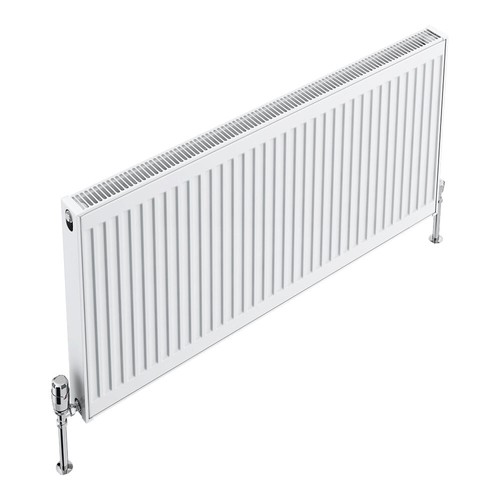 |
|---|
Convector Radiator White Type 11 21 22 400mm 600mm This is the title
Slimline Radiator (Type 11)Description: Our slimline radiator, also known as Type 11, features a sleek design with a single panel and one set of fins. This configuration makes it the thinnest option, perfect for rooms where space is at a premium. While it offers a lower heat output compared to other types, its ideal for areas like cloakrooms, ensuites, or as a secondary heating source in larger rooms. Model: S611K Features:
Model: S613K Features:
Compact Radiator (Type 21)Description: The compact radiator, or Type 21, boasts a single set of fins sandwiched between front and back panels. This design provides a higher heat output while maintaining a relatively slim profile. Its a great choice for bedrooms where efficient heating is essential, but space constraints need to be considered. High-Output Radiator (Type 22)Description: Our high-output radiator, known as Type 22, features two sets of fins and front and back panels for maximum heat distribution. This robust design delivers the highest heat output among the three types, making it suitable for larger rooms that require efficient heating. While it may be bulkier, it seamlessly blends into spacious environments. Radiator Type: Double Convector Type 22
These descriptions provide insight into the unique features and advantages of each radiator type, helping you choose the perfect option for your heating needs and space requirements Further Radiator and Central Heating Information When designing for domestic systems we recommend that the Kompact be used only in heating systems complying with British Standard Code of Practice for Central Heating for Domestic Premises BS 5449 Part 1. On completion of the installation the system should be properly flushed and filled in accordance with the British Standard Code of Practice for the Treatment of Water in Domestic Hot Water Central Heating Systems BS 7593. This will remove flux residues and installation debris, which might promote corrosion and damage within the system. If it is decided to apply a corrosion inhibitor to maximize the working life of the system, it should be applied in accordance with the manufacturers instructions and should be suitable for the particular metals within the system. |
|---|








